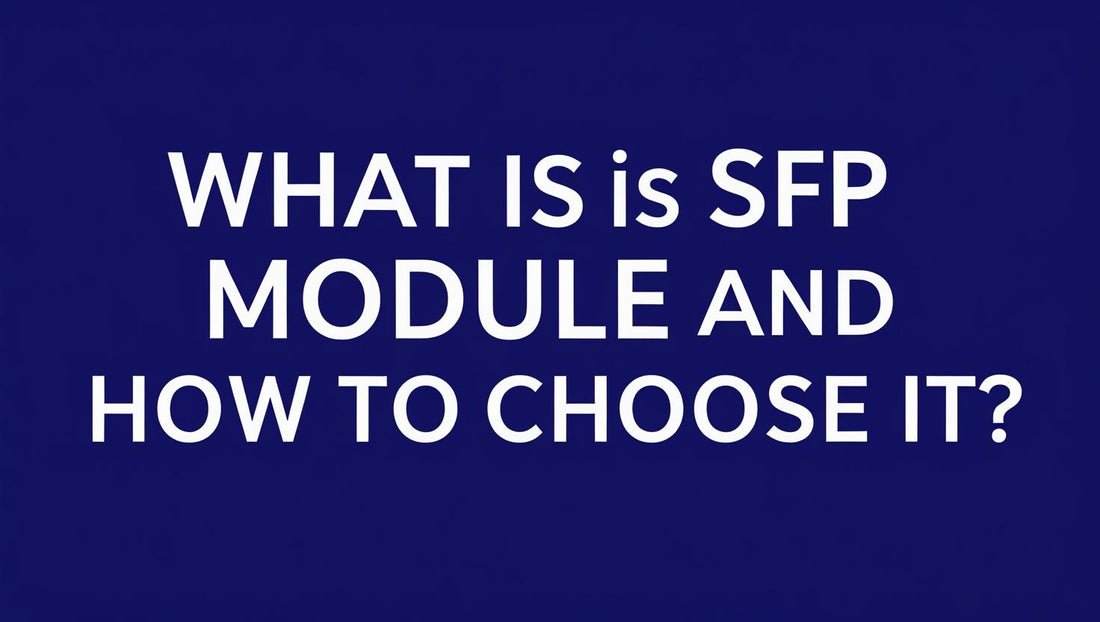
What is SFP Module and How to Choose It?
OptechTWShare
What is SFP Module and How to Choose It?
Understanding the SFP Module in Modern Networks
Small Form-factor Pluggable (SFP) modules are compact, hot-swappable transceivers widely used in data communications and telecommunications networks. They allow network devices such as switches and routers to connect to fiber optic or copper cables, enabling flexible and scalable networking.
What is an SFP Module?
An SFP module is a transceiver that supports data rates typically from 100Mbps to 1.25Gbps (SFP), and up to 10Gbps (SFP+). These modules are designed to plug into an SFP port and convert electrical signals into optical signals (for fiber) or vice versa (for copper).
Types of SFP Modules:
-
SFP (1G): For Fast Ethernet and Gigabit connections
-
SFP+ (10G): Enhanced performance for 10Gbps networks
-
BiDi SFP: Uses a single fiber for transmit and receive
-
CWDM/DWDM SFP: Used for long-haul transmission with WDM technology
-
Copper SFP: For RJ45 Ethernet connections over Cat5e/6 cables
Applications of SFP Modules
SFP modules are deployed in:
-
Enterprise LANs & WANs
-
Data Centers
-
Telecom Base Stations
-
Campus Networks
-
Media Conversion
They are essential for connecting:
-
Switch to switch
-
Router to switch
-
Fiber to Ethernet conversion
-
Cross-building fiber connectivity
How to Choose the Right SFP Module
Choosing an SFP module requires consideration of:
1. Transmission Distance
-
Short-range (SR): 550m or less (e.g., SFP 850nm)
-
Long-range (LR): Up to 10km or more (e.g., 1310nm)
-
Extended-range (ER/ZR): 40km to 80km with DWDM
2. Fiber Type & Connector
-
Single-Mode Fiber (SMF): For long-distance
-
Multi-Mode Fiber (MMF): For short-distance
-
Connector types: LC, SC, MPO
3. Compatibility with Equipment
Make sure the SFP module is compatible with your switch/router brand (e.g., Cisco, Juniper, Arista). Consider vendors like Optech that offer 100% compatible OEM modules.
4. Network Environment
-
Industrial SFPs are suitable for environments with extreme temperatures.
-
Commercial SFPs are best for typical office or data center use.
SFP vs SFP+ – What's the Difference?
| Feature | SFP | SFP+ |
|---|---|---|
| Speed | Up to 1.25Gbps | Up to 10Gbps |
| Distance | Up to 160km | Up to 80km |
| Compatibility | Backward compatible | Requires SFP+ port |
Where to Buy Reliable SFP Modules
If you're a system integrator, ISP, or enterprise buyer, look for manufacturers like Optech, who offer:
-
Wide range of SFP/SFP+/CWDM/DWDM modules
-
Guaranteed compatibility with Cisco, Arista, etc.
-
RoHS, CE, TUV-certified products
-
Fast global shipping and OEM support
Conclusion
SFP modules are vital to building scalable and flexible networks. By understanding your application requirements—distance, speed, compatibility, and environment—you can select the right SFP transceiver that ensures performance, stability, and future-proofing for your network infrastructure.
